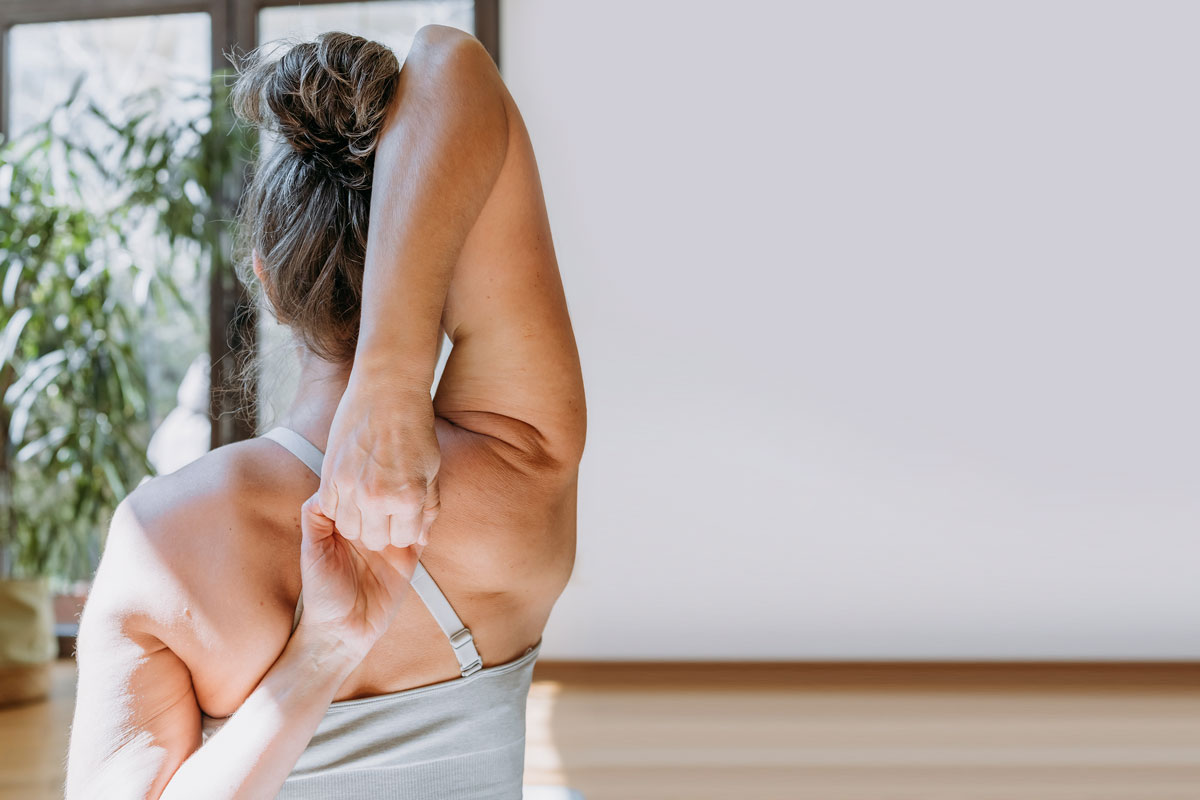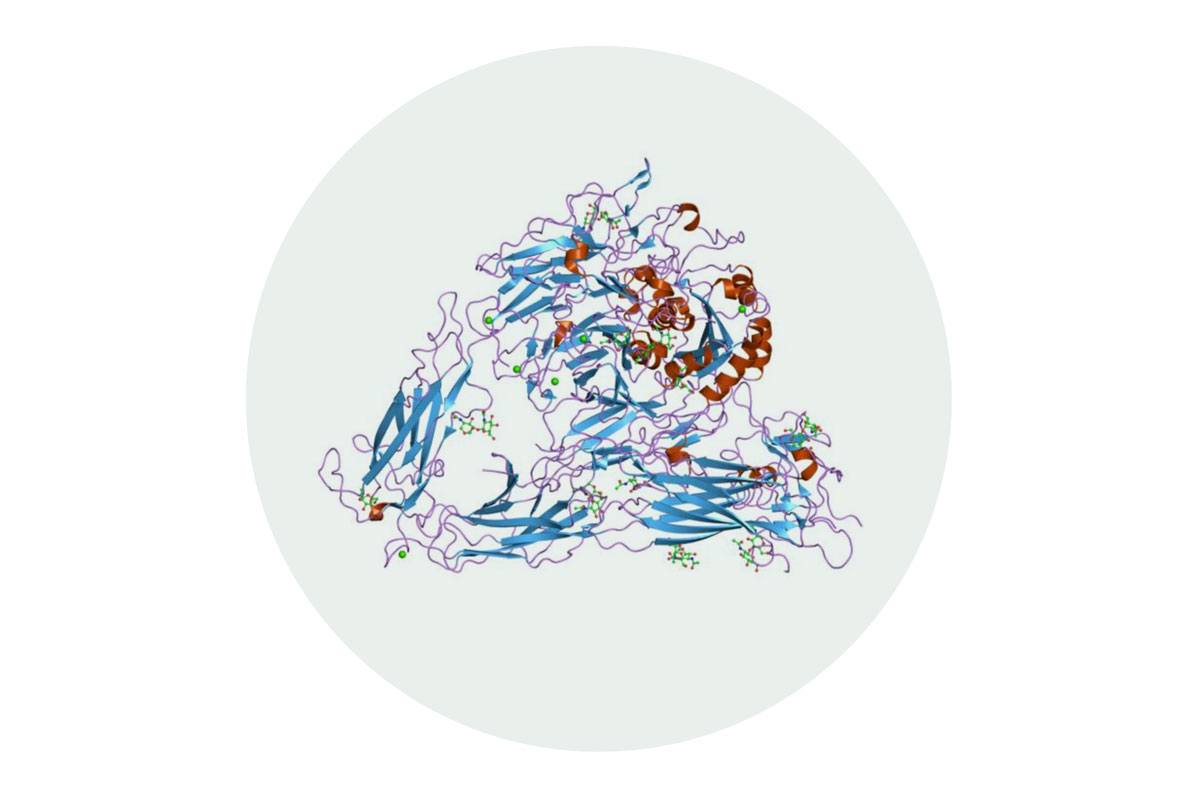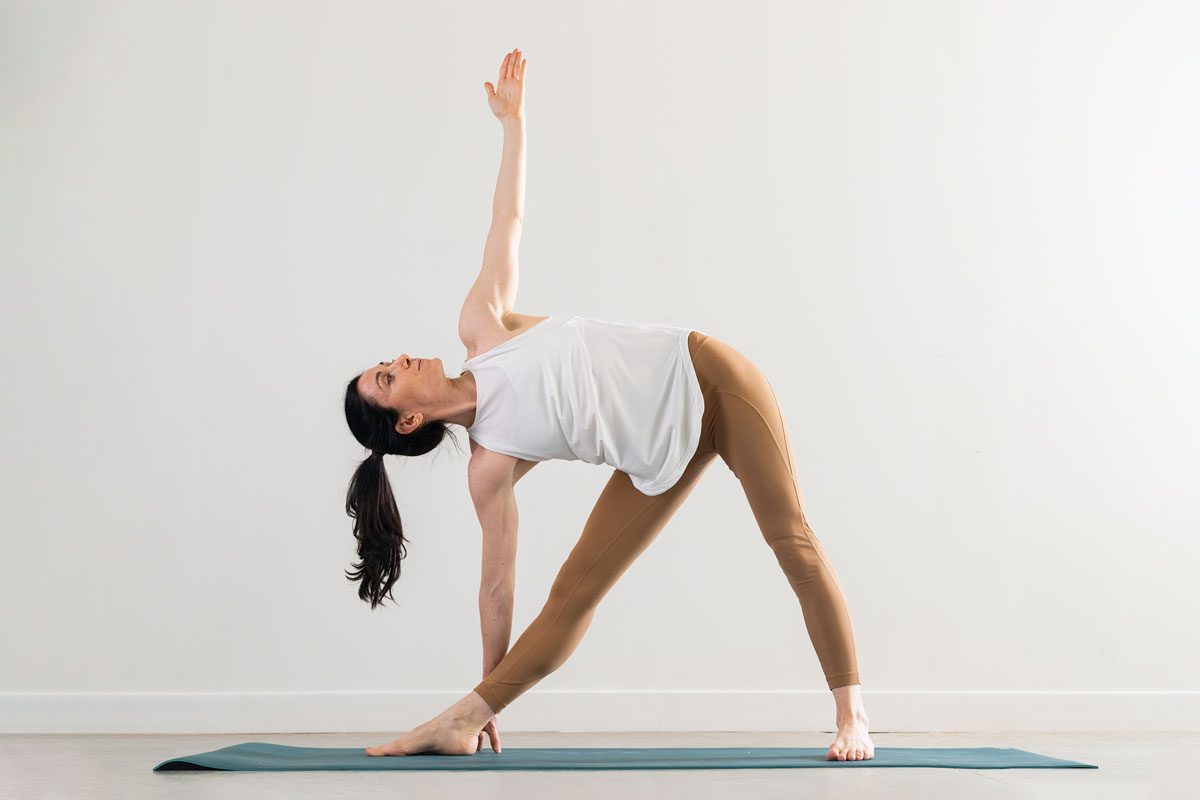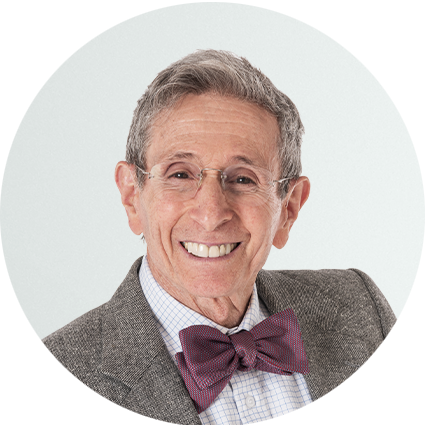A quick puzzle for you: what do you get when you combine bone loss and muscle loss? If you guessed osteosarcopenia you’re way ahead of the game.
As you can imagine, not many people know about this under-recognized and undertreated chronic musculoskeletal condition.
So today we’re shedding light on the inner workings of osteosarcopenia and what you can do to keep it at bay.
What is Osteosarcopenia?
Osteosarcopenia is a condition that describes the combined effects of osteoporosis (bone loss) and sarcopenia (muscle loss).
As such, osteosarcopenia is a new term that represents a frail subset of the elderly population that is affected by this “hazardous duet” of both osteoporosis and sarcopenia.1
This condition is especially common after age 65 due to a progressive decline in muscle mass (~1% per year) and bone mineral density (BMD) (~1–1.5% per year).2
Those who have Osteosarcopenia are at significantly higher risk of falls, fractures, and hospitalizations than others who only have osteoporosis or sarcopenia.
In fact, in a study of 316 elderly Chinese adults it was found that 10.4% of men and 15.1% of women were Osteosarcopenic. And the odds of frailty were significantly higher in osteosarcopenic patients compared to osteoporotic or sarcopenic patients alone.3
Symptoms of Osteosarcopenia
In many cases, osteosarcopenia is asymptomatic. But a previous history of falls and/or fractures in older people should alert physicians to the presence of osteosarcopenia.
Since osteosarcopenia represents the combined effects of osteoporosis and sarcopenia, it can be helpful to pay attention to the risk factors of both these conditions.
Risk factors for osteoporosis and sarcopenia include:4
- older age
- female
- high alcohol intake
- oral glucocorticoids
- menopause (females)
- low protein intake
- low bmi
- current smoking
- low dietary calcium
- low serum vitamin D
- hypogonadism (in men)
- hyperparathyroidism
- obesity
- rheumatoid arthritis
- living in residential aged-care facilities
- chronic kidney disease
- low mobility and function
Understanding the “Muscle-Bone Crosstalk”
So interesting fact of the day: bone and muscle like to chat it up. It’s true, their different molecular responses to each other are so varied and spontaneous that the process has been compared to a conversation and labeled “muscle-bone crosstalk.”
And grasping this interplay is key for understanding osteosarcopenia. It’s also essential for recognizing the interdependence of bone and muscle.
Many researchers have found that bones, and muscles too, are actually endocrine organs in their own right. And their hormone and hormone-like products affect themselves, their local environment, and the entire body (autocrine, paracrine and endocrine functions).

In their studies, researchers have found more than 600 endocrine elements secreted by muscles. When it comes to bones, the number is far less. But some key molecules have already been identified and characterized.
What has been learned so far indicates that bones, muscles, fat, and the collagen in joints are tightly connected. And changes to one of these elements will affect all the others.
This introduces a totally new and more profound concept of physiology in which the entire body — all its trillions of cells — coordinate and complement each other like a beautiful, mighty symphony.
With that being said, this field is still in its infancy. Almost all the research brings up hints rather than conclusions.
So we’ll stick to a few well-documented effects of a few substances — the ones that give us some guidance in our diets and lives. But first, we’ll need a little help from Wolff’s law.
Wolff’s law is a nineteenth century formulation of how activity builds bone. It states:
“The architectonic of a bone follows the lines of force to which that bone is exposed.”
Two current theories describe the mechanics of Wolff’s law.
How Wolff’s Law Works: Two Theories
One theory cites integrins. These are multiple small projections from bone cells that work their way into the fibers of bone, as in the figure on the right. Once they are in the bone they stimulate structures deep within the osteocytes.
These structures can include the cell nucleus or the mitochondria — the power-stations of the osteocytes.5And these changes set the cell up to work so it makes new bone.6
The other theory ascribes mechanotransduction to the cell membrane. This fancy sounding process involves changing mechanical stimuli (bending, compressing, or twisting the cell) into another form of energy — electricity.

So just think of an electron volt on the inside of a cell powering a chemical reaction to produce a new protein. This new protein will find its way into the cell nucleus and upregulate certain DNA. It will then promote the changes that make for new bone.7-12
In either case, pressure on the bone deforms it slightly. This stimulates bone cells to make new bone right where the bone sustains the force.
Now that we’ve covered Wolff’s law, let’s look at three of the better understood components of muscle-bone crosstalk, for hidden in this crosstalk are the underpinnings of Wolff’s law.
But first, apologies are given in advance that much of this information comes from animal studies. Yes, the field is that new. But it’s old enough that multiple studies confirm that mouse DNA acts very much like human DNA.12 As in the case with humans, every substance they secrete has built-in checks and balances.
What is Osteocalcin?
Osteocalcin (OCN) comes from osteoblasts (bone building cells) in three forms: carboxylated, undercarboxylated, and non-carboxylated. For our purposes, the under- and non-carboxylated forms are the most important.
These forms enhance muscle contraction causing the muscles’ fibers to grow and multiply rapidly.
As a result, muscular decline reverses — even in 15-month old mice (probably the equivalent of a 51 year-old person).7-12
What’s more, the undercarboxylated OCN prods pancreatic beta cells to release insulin, which goes back and helps the bones’ metabolism.
Further, the carboxylated OCN prompts the hypothalamus to promote sympathetic (fight-or-flight) responses.
While all this is going on, insulin prompts the body’s fat cells to release leptin. This is the check and balance action that makes the brainstem secrete serotonin, putting reins on the hypothalamus’s sympathetic tone.
Often billed as rivals, osteocytes and osteoclasts (the cells resorbing the matrix of bone) work together in this.
Once considered the enemy of bone strengthening, bone resorption raises active OCN levels. And osteoclasts that decarboxylate OCN make it active — another check and balance.
According to Wolff’s law, this is nature’s shrewd way of limiting and coordinating the entire process of remodeling bone.
How to Increase Osteocalcin in the Body

So we know that OCN is good for us. But how do we increase the number of molecules of OCN coursing through our systems?
Well for one, you can take Vitamin K, especially K2. It has a direct effect on osteocytes and stimulates OCN production.
Another way to boost OCN levels is to lose weight. Shedding extra pounds frees the hormone and hormone-like substances in muscles, bones, and fat cells that stimulate OCN.
As you know, a great way to lose weight is to exercise. In addition to helping you stay in shape, exercising also helps improve bone density and muscle strength.
So consider adding a twelve-pose yoga sequence to your exercise routine that has been shown to build bone. It’ll give your bones and OCN levels the boost they need.13
What is Myostatin?
A second part of the muscle-bone crosstalk involves myostatin.
Myostatin is a member of the transforming growth factor beta (TGF-β) superfamily which inhibits skeletal muscle growth — it also has effects on bone and tendon.14
Specifically, myostatin keeps the muscles under lock and key, reducing their mass. Androgen (a male hormone) decreases myostatin.
In addition, exercise lowers myostatin, prompting the muscles to grow in volume and strength.
This also makes for the enlargement and strengthening of the parts of bone that muscles attach to. In this way myostatin helps shape and remodel bone.
What is Sclerostin?
Finally, a third part of the muscle-bone crosstalk involves sclerostin. Sclerostin is a small protein expressed by the SOST gene. It reduces osteoblastic bone formation.15
As such, it’s an important regulator of bone remodeling. It also assists in the crosstalk that shapes the large hip bone and wrist.
Mitigating the Risks of Osteosarcopenia
As in the case with osteoporosis and sarcopenia, there are lifestyle changes you can make to help keep osteosarcopenia in check.
Exercise
As mentioned earlier, regular exercise is key to having healthy bones and muscles. It has many positive effects on the older population, with one meta-analysis finding exercise reduced overall fracture risk by 51% in adults over 45 years old. 16
Moreover, exercise programs are even effective for frailer adults, with a meta-analysis of elderly residents in long-term care demonstrating a 29% reduced risk of falls in those that underwent combined resistance and balance training programs.17
Nutrition
A lack of adequate intake of vitamin D and protein has been linked to declining muscle strength.18 Vitamin D deficiency also leads to increased risk of falls through its multiple effects on muscle and bone (Kaji, 2014).19
So vitamin D supplementation can have many beneficial effects, including increased muscle strength, decreased mortality and falls, and functional improvement. Guidelines generally advocate 800-2000 IU/day.20
Adequate calcium intake is also advised in patients with osteosarcopenia (To learn more about calcium intake visit here)

According to Dr. Robert Heaney, internationally recognized expert in the field of bone biology and calcium nutrition, “Protein is necessary if calcium is to help us build or rebuild bone. Recall that bone is about 20% calcium by weight but 50% protein by volume.”
The current recommended daily allowance (RDA) for protein intake is 0.8 grams per kg of body weight.23 But this RDA was set over a decade ago, and experts now believe it’s not an adequate amount.
More recent research recommends that older adults consume 1–1.5 grams of protein per kg of body weight.
What practices are you engaging in to keep your bones and muscles strong and healthy? Let us know in the comments section.
References:
- Dr James Paintin, Professor Cyrus Cooper, and Professor Elaine Dennison, “Osteosarcopenia” Br J Hosp Med (Lond). 2018 May 2; 79(5): 253–258. doi: 10.12968/hmed.2018.79.5.253
- Ben Kirk, Jesse Zanker, and Gustavo Duque, “Osteosarcopenia: epidemiology, diagnosis, and treatment—facts and numbers” J Cachexia Sarcopenia Muscle. 2020 Jun; 11(3): 609–618. Published online 2020 Mar 22. doi: 10.1002/jcsm.12567
- Yan-Jiao Wang, Yi Wang, Jun-Kun Zhan, Zhi-Yong Tang, Jie-Yu He, Pan Tan, Hui-Qian Deng, Wu Huang, You-Shuo Liu, “Sarco-Osteoporosis: Prevalence and Association with Frailty in Chinese Community-Dwelling Older Adults” Int J Endocrinol. 2015;2015:482940. doi: 10.1155/2015/482940. Epub 2015 Jul 27.
- Ebrahim Bani Hassan, Gustavo Duque, “Osteosarcopenia: A new geriatric syndrome” The Royal Australian College of General Practitioners 2017
- Cariati I, Bonanni R, Onorato F, Mastrogregori A, Rossi D, Iundusi R, Gasbarra E, Tancredi V, Tarantino U. Role of Physical Activity in Bone–Muscle Crosstalk: Biological Aspects and Clinical Implications. Journal of Functional Morphology and Kinesiology. 2021; 6(2):55. https://doi.org/10.3390/jfmk6020055.
- Ye, H. Mechanic stress generated by a time-varying electromagnetic field on bone surface. Med. Biol. Eng. Comput. 2018, 56, 1793–1805. [Google Scholar] [CrossRef]
- Ahn, N.; Kim, K. Effects of 12-week exercise training on osteocalcin, high-sensitivity C-reactive protein concentrations, and insulin resistance in elderly females with osteoporosis. J. Phys. Ther. Sci. 2016, 28, 2227–2231. [Google Scholar] [CrossRef]
- Kim, Y.-S.; Nam, J.S.; Yeo, D.-W.; Kim, K.R.; Suh, S.-H.; Ahn, C.W. The effects of aerobic exercise training on serum osteocalcin, adipocytokines and insulin resistance on obese young males. Clin. Endocrinol. 2015, 82, 686–694. [Google Scholar] [CrossRef] [PubMed]
- Mera, P.; Laue, K.; Ferron, M.; Confavreux, C.; Wei, J.; Galán-Díez, M.; Lacampagne, A.; Mitchell, S.J.; Mattison, J.A.; Chen, Y.; et al. Osteocalcin Signaling in Myofibers Is Necessary and Sufficient for Optimum Adaptation to Exercise. Cell Metab. 2016, 23, 1078–1092. [Google Scholar] [CrossRef] [PubMed]
- Lin, X.; Hanson, E.; Betik, A.C.; Brennan-Speranza, T.C.; Hayes, A.; Levinger, I. Hindlimb Immobilization, But Not Castration, Induces Reduction of Undercarboxylated Osteocalcin Associated With Muscle Atrophy in Rats. J. Bone Miner. Res. 2016, 31, 1967–1978. [Google Scholar] [CrossRef]
- Mera, P.; Laue, K.; Wei, J.; Berger, J.M.; Karsenty, G. Osteocalcin is necessary and sufficient to maintain muscle mass in older mice. Mol. Metab. 2016, 5, 1042–1047.
- Ducy, P. The role of osteocalcin in the endocrine cross-talk between bone remodelling and energy metabolism. Diabetologia 54, 1291 (2011). https://doi.org/10.1007/s00125-011-2155-z
- Lu YH, Rosner B, Chang G, Fishman LM. Twelve-Minute Daily Yoga Regimen Reverses Osteoporotic Bone Loss. Top Geriatr Rehabil. 2016;32(2):81-87. doi:10.1097/TGR.0000000000000085
- Hiroshi Kaji, “Interaction between Muscle and Bone” J Bone Metab. 2014 Feb;21(1):29-40. doi: 10.11005/jbm.2014.21.1.29. Epub 2014 Feb 28.
- E. Michael Lewiecki, “Role of sclerostin in bone and cartilage and its potential as a therapeutic target in bone diseases” Ther Adv Musculoskelet Dis. 2014 Apr; 6(2): 48–57. doi: 10.1177/1759720X13510479
- W Kemmler 1, L Häberle, S von Stengel, “Effects of exercise on fracture reduction in older adults: a systematic review and meta-analysis” Osteoporos






Kimberly Black
September 22, 2022 , 7:39 amCan’t thank you enough for this article and this company!